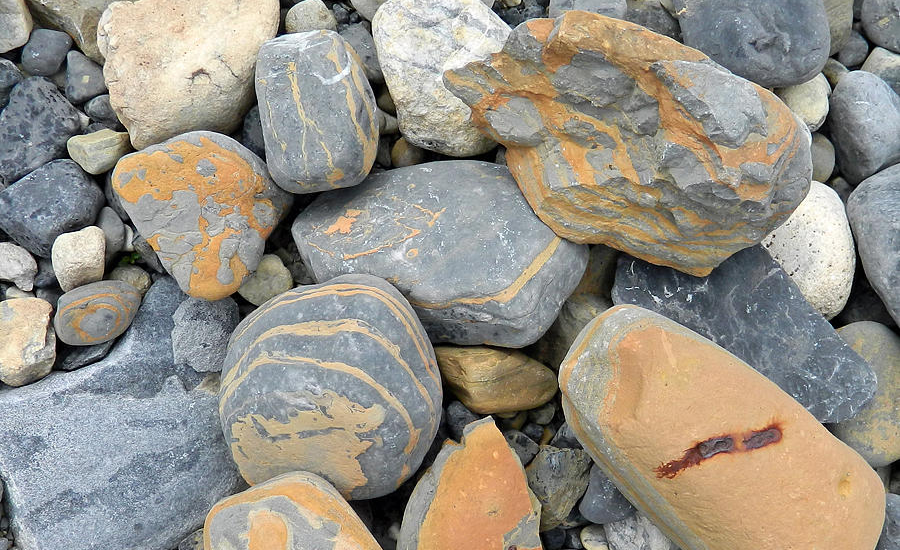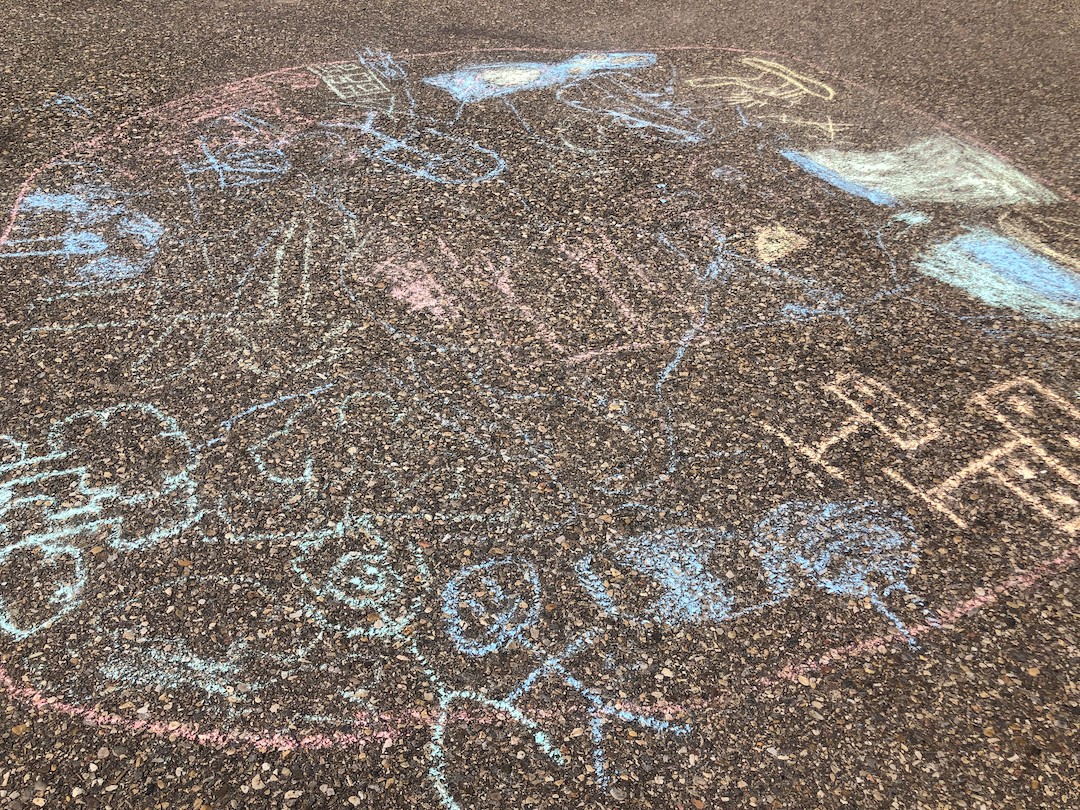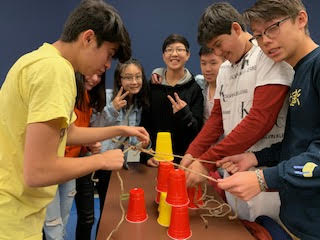Experience how habitat loss puts pressure on biodiversity.
PURPOSE
Overhunting or poaching used to be the main human activity that caused a species to become endangered. In this section, students will learn that loss of homes, or “habitat loss,” is now the main factor that puts species in North America and worldwide in danger of extinction.
GRADE LEVELS
3-6
TIME NEEDED
20 minutes

Curriculum LINKS
Grade 3, Science, Topic E: Animal Life Cycles
Grade 4, Topic A: Waste & Our World
Grade 5, Topic E: Wetland Ecosystems
Grade 6, Science Topic E: Trees & Forests
MATERIALS NEEDED
Length of string long enough to cross the classroom
Several signs saying “No Longer Usable”
Instructions
- Before students enter the room, stretch a string across the entire length of the room with a sign on it saying “No Longer Usable” so that students are forced to crowd into half or a third of the space that they are accustomed to using.
- Ask the students:
- What has changed in the classroom?
- Would you feel comfortable spending the rest of the year in this new setting? Could you do it if you had to?
- Students should agree that they felt more comfortable under roomier conditions.
- Ask students to imagine that they are a wild animal (some of your students may find this easier than others).
- Ask them: If your desk and the space around it represented your home range (i.e. all the habitat you need to meet your needs) would this new arrangement be unsatisfactory? Why?
- There are now more students using the same amount of habitat.
- In real life, do you think that animals would accept the new, more crowded conditions?
- No. Animals have to meet their basic needs within their home ranges – a smaller area does not always provide enough habitat for the animal to survive. Explain that most animals are not happy living so close together. For example, a wolf that wanders into another wolf pack’s territory may be killed or chased away. When habitat becomes unusable some animals are left without a home and may die.
- No. Animals have to meet their basic needs within their home ranges – a smaller area does not always provide enough habitat for the animal to survive. Explain that most animals are not happy living so close together. For example, a wolf that wanders into another wolf pack’s territory may be killed or chased away. When habitat becomes unusable some animals are left without a home and may die.
- Ask them: If your desk and the space around it represented your home range (i.e. all the habitat you need to meet your needs) would this new arrangement be unsatisfactory? Why?
- Remove the string/divider and have students return to their seats.
- On the board, draw a square. Tell the students that this square represents a park that can support a maximum of ten grizzly bears; any more, and every bear would feel crowded and would not be able to meet its needs (food, shelter, space). Ask the students:
- If there are two bears this year, and the number of bears doubles every two year, how long will it be before there are too many?
- Two years from now there will be four; there will be eight in the forth year; and there will be sixteen in the sixth year. Therefore, in the fifth year the bears would start to feel crowded.
- What do you think would happen in the fifth year?
-
Bears would either migrate from the park or die before they could reproduce
-
- If there are two bears this year, and the number of bears doubles every two year, how long will it be before there are too many?
- Draw a dashed line down the centre of the square, and write the words: “Houses for Humans” in one half of the square. Ask the students:
- What would happen to the ten bears that used to live in the park?
- Students may at first feel that the bears may live together – if so, remind them of how crowded they felt when they themselves were forced in to a crowded classroom space!
- What will happen to the bears that have lost their homes?
- Unfortunately for these bears, there is no “vacant bear habitat”: unable to meet their basic needs, they will die. This habitat loss due to human activity – whether it is the building of human homes as shown here, or other human activities – is the main cause of extinction of animals.
- What do you think might have happen to the cordoned-off area that you saw when you first entered the classroom? Apart from the loss of habitat, what else might have happened?
- Write answers on the board.
- What would happen to the ten bears that used to live in the park?
Discussion
What things cause plants and animals to go extinct? Which of these is the most significant? Least significant?
There are a number of ways in which humans cause the extinction of plants and animals. Record students’ answers on the board, then put up the overhead entitled “How Alberta Plants and Animals go Extinct.”
This overhead lists the main six mechanisms of biodiversity loss in Alberta, in order of importance. Remind students that most of these mechanisms have only developed in recent decades, as the numbers of humans – and our uses of natural resources – have shot up.
Emphasize to students that habitat loss is the #1 problem. Say to your students: “After all, if someone took your habitat (i.e. your home) and you couldn’t find another, you’d have problems surviving too!” Use the following to elaborate on the overhead entitled “How Albertan Plants and Animals become Extinct.”
A. Habitat loss: Species lose the food, water, and shelter they need to survive through habitat destruction and habitat fragmentation
In habitat fragmentation, roads, trails, pipelines and transmission lines carve natural habitat up into fragments too small for larger animals to meet their needs for survival. For example, less than 3% of Alberta’s vast foothills region is not fragmented. This is associated with habitat alienation, where habitat is still present but some animals won’t use the habitat because it is too close to human activity. For example, most of the Bow Valley near the Town of Banff is good habitat, but wolves will not use it because there are too many people and cars in the area.
B. Introduced species: Exotic species never before found in the food web have no natural predators, and crowd out the native species
Some biologists think that the problem of “weedy species” (introduced species) will one day replace habitat loss as the #1 cause of extinction. In the U.S. 4500 species have established free-living populations and cause $87 billion in damages every year. Writers such as David Quammen feel that we may be headed towards a “Planet of Weeds” in which weedy species will be all that is left, and will grow everywhere on the planet. Common examples of introduced species include purple loosestrife, which overtakes wetland areas and chokes out native vegetation, or the house sparrow, which competes with native songbirds for space and food.
C. Overuse of plant and animal species – using up more individuals than can be sustained
This is what caused the extinction of the Passenger Pigeon. Advancements in science allow us to study species better than ever before. We can now better manage those species that we harvest. The bull trout, a species at risk in Alberta, is now catch and release after science showed is was being over-fished and was suffering habitat loss due to dams on rivers. There are still some species, though, that are not formally protected, such as the grizzly bear or wolf, which can be hunted.
D. Pollution of soil, water, and atmosphere – industrial and household chemicals poison the ecosystem
Pollution includes greenhouse gas emissions, acid rain, sewage, or garbage. Specific example of the impact of pollution include burrowing owls that have been poisoned by Alochlor, a grasshopper insecticide, and the case of deformed frogs found in urban areas – possibly because of a family of chemicals called hormone disrupters.
E. Global climate change – changes in climate affect living things
Global warming is believed to have caused seawater to warm by up to one degree Celsius in tropical oceans, an increase which has caused widespread death of coral reefs – and the death of those fish that need the reef to survive. In Alberta, global warming may change the conditions of
temperature and precipitation which determine where plants and animals survive. Some biologists fear that changing climate may cause extinctions to occur even within large protected areas. Scientists are also anticipating loss of polar ice with an increase in temperature. This will have a negative impact on polar bears that rely on the ice for traveling to find their prey.
For older students: About limiting factors:
4: Introduce the concept of limiting factor: a condition that limits population growth, or that keeps an organism’s population from growing in an uncontrolled manner. Ask students:
What does every living thing need to survive?
Every living organism generally needs four things: food, water, shelter and space. (Living things usually need air, too, but this is generally easy to find).
What are some limiting factors for people? For animals?
This is a trick question: although we sometimes forget, humans are an animal species. Availability of food, water, shelter, or shelter is a limiting factor for all animals.
5: Give the students the following scenarios or “thought experiments.”
What would the limiting factor be if the entire class was…
…marooned with food on an ice floe in the arctic?
Lack of shelter (in other words, an ability to keep warm) would most probably be the limiting factor in this case.
…crammed into a tiny room and left for a day or two?
This limiting factor would be something we normally take for granted – the availability of air. Tell the students (if you feel it isn’t too gruesome a story!) about the Black Hole of Calcutta, where British soldiers were left too long in a tiny dungeon and almost all of them died from suffocation. We can also be limited by our inability to dispose of wastes – in this case, waste carbon dioxide.
…locked into a canned good store with only a can-opener?
The limiting factor might be the availability of water.
What are the limiting factors for humans on the earth?
Answers may vary. In a desert area, availability of water may be a limiting factor. In an area where humans can’t grow plants because the soil is too saline or infertile (or where the human population is simply too large for the land to support), food may be a limiting factor. The ability of an ecosystem to support a population of a certain animal indefinitely is called
its carrying capacity.
What do you believe is the Earth’s carrying capacity: five billion people? Ten million people? More than this??
This question serves as a brief introduction to the intriguing and controversial area of population studies. Some people believe that the present population of humans (6.45 billion in 2005) already exceeds the earth’s carrying capacity: that the earth can’t sustain this many people. On the other hand, a study by the Food Aid Organization in 1982 stated that the earth could support up to 30 billion people. Still others would argue that while there are certain areas that are prone to famine, the earth can still support more people.
Currently, the world’s population increases by 100 million more each year. It is estimated that the population of the earth may stabilize between 8 and 14 billion in the next century. Explore with your students the implications of twice as many people trying to meet their needs for survival on an earth that will never be any bigger than it is now. Ask them:
What are the consequences for our own behaviour (e.g. the amount of resources we each use)? What will this mean for other species and the habitats necessary to meet their needs?
One thing is for sure – it will be more difficult to ensure the survival of endangered plants and animals. Engage students in a discussion about their ecological footprints. The Ecological Footprint measures human demand on nature. The eco-footprint is a tool that can help us see
our effect on our planet. It estimates how much individuals, organizations, and communities consume and compares this amount to the resources that nature can provide. Canadians have the third largest footprint in the world.
If every person on the world lived like the average Canadian, we would need FOUR EARTHS to provide the material and energy we demand! Have your students think about ways to reduce their ecological footprint.
“Anyone interested in the future of biological diversity needs to think about the pressure people [in the future] will face, and the pressures they will exert in return.” – David Quammen, Planet of Weeds, Harpers Magazine, 1998
More Bring Nature Home for Teachers
Bring Nature Home is our online database of tried-and-tested CPAWS Southern Alberta activities! Here are some ways that you can bring nature home (or to the classroom) today!

Elder Rocks

Build a (Inclusive) Park

